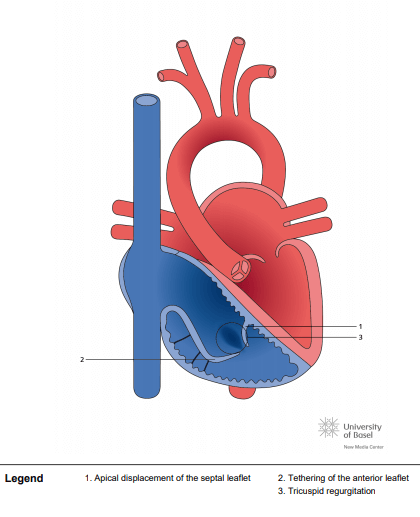Ebstein anomaly
- Inicio
- Cardiopatías congénitas
- Página actual

Ebstein’s anomaly is a rare congenital heart disorder occurring in ≈1 per 200 000 live births and accounting for <1% of all cases of congenital heart disease.2–6 This anomaly was described by Wilhelm Ebstein in 1866 in a report titled, “Concerning a very rare case of insufficiency of the tricuspid valve caused by a congenital malformation.”7,8 The patient was a 19-year-old cyanotic man with dyspnea, palpitations, jugular venous distension, and cardiomegaly.7,8 At autopsy, Ebstein described an enlarged and fenestrated anterior leaflet of the tricuspid valve. The posterior and septal leaflets were hypoplastic, thickened, and adherent to the right ventricle. There was also a thinned and dilated atrialized portion of the right ventricle, an enlarged right atrium, and a patent foramen ovale9 (Figure 1). By 1950, only 3 cases of this anomaly had been published.
The American Association for Thoracic Surgery (AATS) 2024 expert consensus document
Echo Parasternal long axis tricuspid valve
Echo Parasternal long axis pulmonary valve
Echo Parasternal short axis RVOT
Echo Subcostal short axis atrial septum
Echo Subcostal short axis ventricles
